By KATIE TIMS • Photography by RORY DOYLE
Remembering the end of World War II and the stories we must never forget
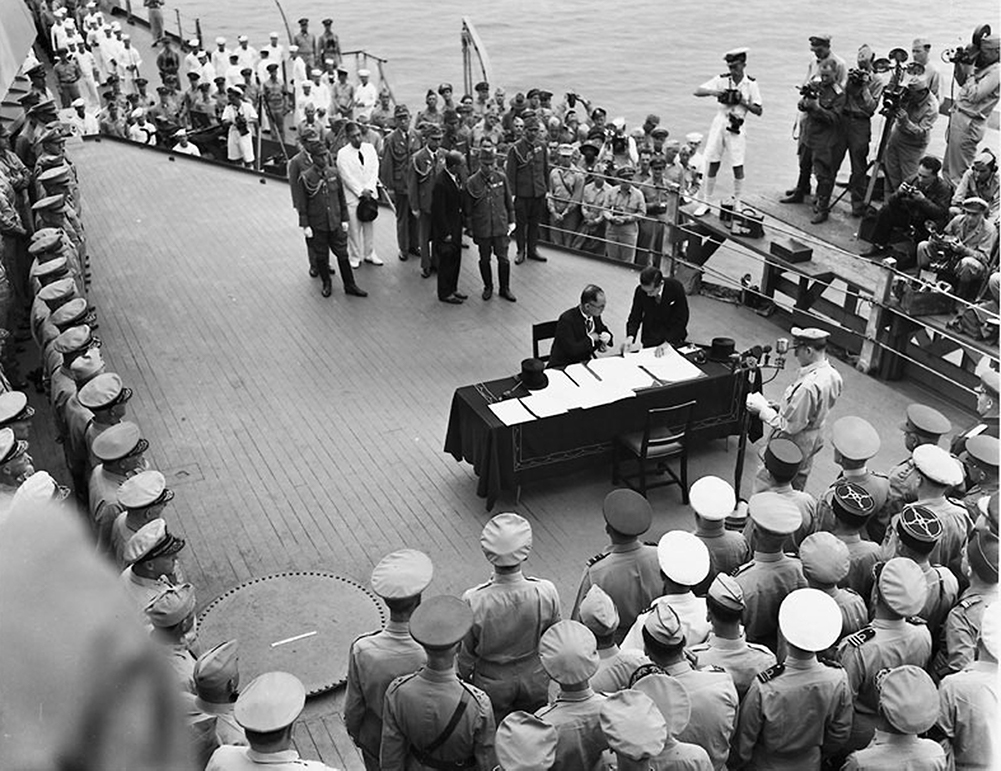
Seventy-five years ago, World War II ended. It was really over! The soldiers came home to rejoin families, find jobs, go to school, get married, have children, live life.
But, they never did say much. Self-pity wasn’t the modus operandi—not for these guys. They seldom, if ever, mentioned their wartime uncertainty, unrelenting fear, pain, second guesses. Profound heartbreak. Most World War II soldiers went to places, mentally and physically, they wished they could forget.
As it’s aptly stated, war is hell.
Thankfully, in the past couple of decades, Americans recognized the importance of honoring our World War II soldiers—including the 416,800 who died. In 2000, the National World War II Museum (formerly the D-Day Museum) opened in New Orleans. Then in 2004, the World War II Memorial was finished in Washington, D.C.
These venues encourage remembrance and honor. Now, World War II veterans have places and times to soften stoicism for the sake of history—perhaps even absolution.
Theirs are stories that Americans must never forget.
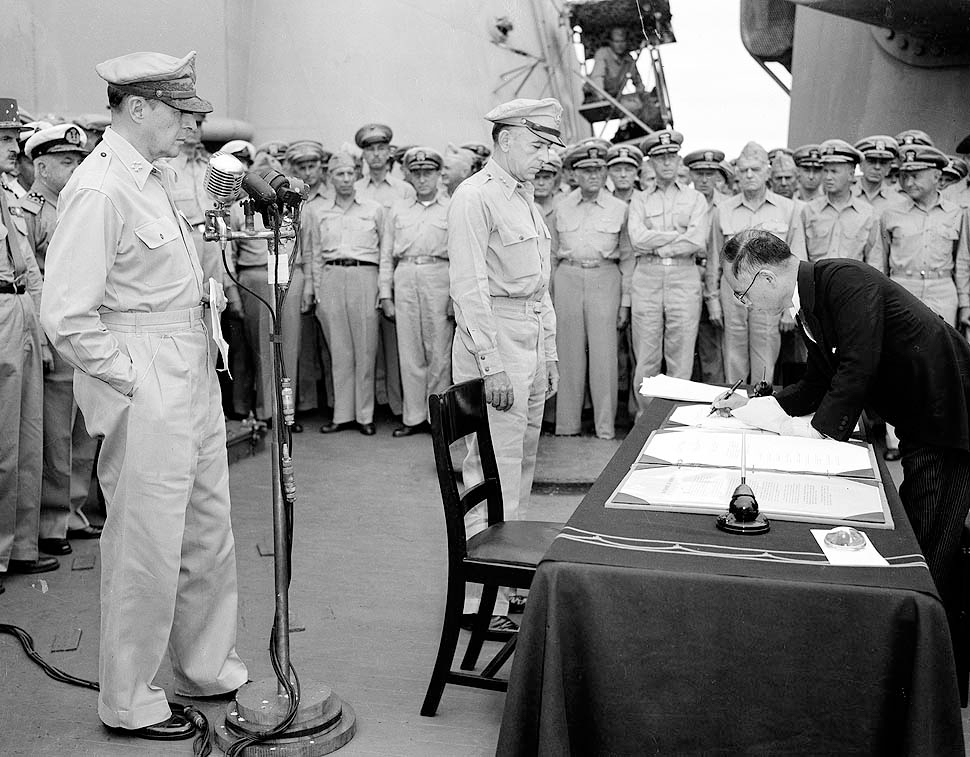
document that marked the end of World War II.
Token of Appreciation
Dr. Jim Adams, didn’t fight in World War II. This Cleveland medical doctor and his three brothers—Bill, Philip and David—aren’t old enough to remember the day the war ended.
However, their father was. Proof hangs on the wall of the family’s house in Rosedale, Mississippi.
It’s an American Flag given to Ensign William Adams by Admiral John S. McCain Sr. on September 2, 1945—the day Supreme Commander Douglas MacArthur, Japanese Foreign Minister Mamoru Shigemitsu, and ten others signed the formal surrender aboard the USS Missouri, formally ending World War II.
That day, Admiral McCain was a prominent representative among the American delegation. Ensign Adams was there also. He was a crewmember on the destroyer escort that ferried McCain to and from the USS Missouri. Following the surrender ceremony, on the way back to his ship, McCain asked the men, “Is there a Mississippi boy on this boat?”
“Yes sir! There’s Ensign Adams!’’ one soldier piped up.
“That’s when he presented my father with this flag,” Jim says about what happened next. “He was given this as a token for all the other citizen soldiers. It was a prestigious memento representing all the sacrifices made by the average guys.”
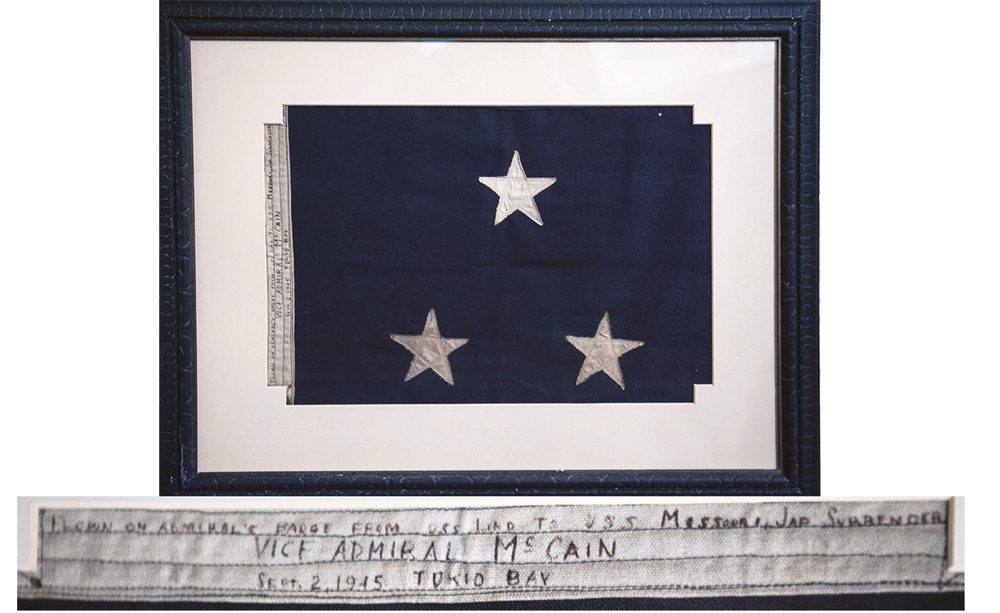
Among the Adams brothers there is disagreement about whether or not the flag originated from the USS Missouri. Recorded history has it that Captain Stuart Murray collected the American flag from the USS Missouri and gave it to the Naval Academy Museum in October 1945. (Efforts to confirm its actual location were made, but were complicated by the closure of the museum due to the COVID-19 virus.) It might have been another flag that had been aboard the USS Missouri, or perhaps it was the one flying on the destroyer escort.
One thing is for sure: the great Admiral John S. McCain handed over the special American flag to an average soldier from the Mississippi Delta.
“My father was always for the citizen solider—he was a citizen soldier,” Jim says. “That was his main creed, and this flag is a memento of all the sacrifice. There were so many who died and suffered such terrible fates. The ones who got to go back to the farm were lucky. My dad was one of them.”
Admiral McCain died just four days later and was buried at Arlington National Cemetery. His son, John S. McCain Jr., also became a United States Navy Admiral, making them the only father-son admirals in US history. Also, his late grandson, John S. McCain III served in the military and ran for US president in 2000 and 2008.
So, why did Admiral McCain give the flag to the ensign from Mississippi? Because the admiral was a native Mississippian. Back into the early 1800s, his family owned a plantation in Carroll County.

William Adams and his two brothers all had roles in World War II. The oldest, Cooper, was an attorney who put his career on hold to be a soldier. Coincidently, Cooper had a chance encounter in the South Pacific that resulted in sharing of whiskey with Admiral McCain—yes, the same one! The middle brother, John Kirk, lost a kidney playing football in high school. John didn’t serve in the military, but he graduated from Princeton and became a mechanical engineer. Eventually, he worked on the Manhattan Project—the top-secret program to build the atomic bomb, which ultimately resulted in the ending of World War II.
William eventually moved to the Mississippi Delta to work the farm his mother inherited from her parents. (Waxhaw Plantation, as it is known, is a few miles from Gunnison and is still operated by the Adams.) William graduated from the Naval Academy as a gunnery officer. He served first in Italy and then shipped out to the South Pacific, where he remained until the end of the war. The Adams family is one steeped long in military tradition and William, especially, was a strong supporter of citizen soldiers.
“My dad believed that citizens ought fight the wars,” Jim explained. “He thought we should have standing officers, but not standing armies that develop military adventures—‘Let’s go around the world and correct everybody else’s regimes.’ That’s not what citizen soldiers do. They fight for America.”
The Citizen Soldier
Jim Adams likes to conjure the spirit of Lucius Quinctius Cincinnatus—the legendary Roman military leader who left his farm and family to fight for Rome. Once he gained glory and the chance for power, he gave up both to return to his simple farming life.
“My dad was strictly a Cincinnantus—the idea that you lay your plow down, you go serve your country, you finish your job, and then and you go pick up you plow again,” Jim says.
It was this way for the majority of American soldiers who served their country in World War II. Some fought in Europe. The rest battled in the Pacific. All of them defended our great country and its powerful standards of freedom and democracy.
The war ended in September 1945, and the soldiers came home to pick up where they left off. Here in the Mississippi Delta, William Adams returned to farming near Gunnison. Brothers Jo and Victor Aguzzi also worked their family farm in Cleveland. Joe Barnes became district school superintendent in Rosedale. Dutch Ehret worked for Gulf Oil for almost four decades. Nevin Sledge owned an automobile dealership and served as a Mississippi state senator. Buddy Thompson worked for Southern Bell for many years.
These are just a handful of the Mississippi Delta’s many World War II veterans. The ones who remain with us are up in age (all of them in their nineties or one hundreds), but with the right conversation, each man transforms back into that citizen soldier: a brave young boy who gave up everything—family, love, job, school, safety—to fight for his country and freedom.
Heroes—every one of them.
Joe Aguzzi
Now ninety-four, Cleveland resident Joe Aguzzi had just turned eighteen in May 1944, and a month later he entered basic training at Fort McClellan, Alabama. He shipped out a few months later and joined the Army’s 63rd Infantry Division in France. Joe was a scout in this historic progress, often referred to as the “path of blood and fire.”
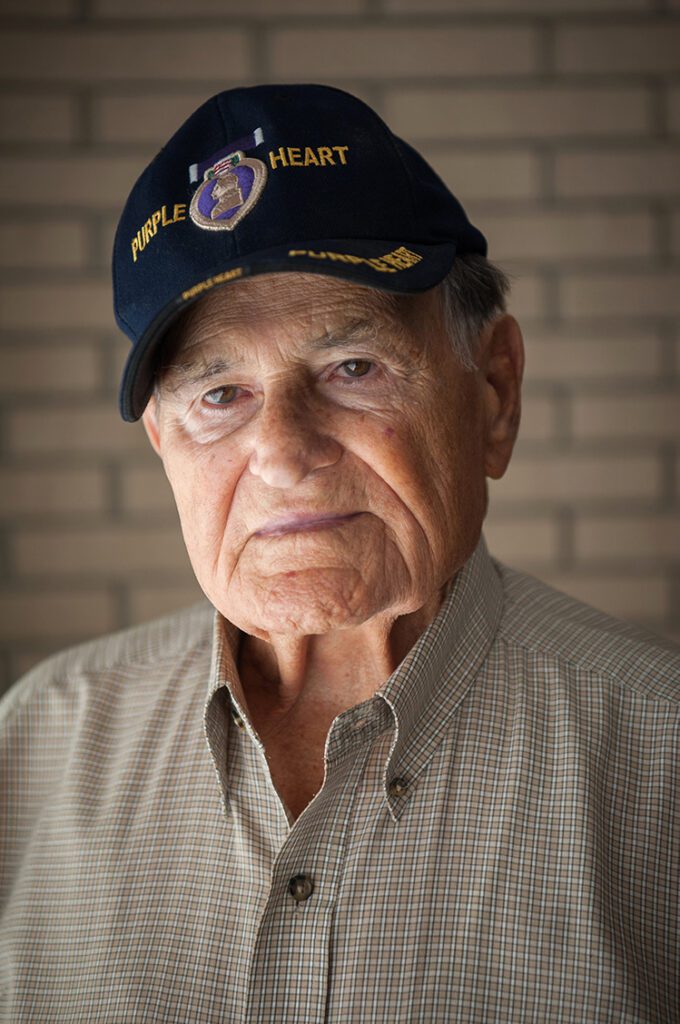
A scout’s mission is to march forward and identify the enemy’s position, which is often achieved by being shot at. Joe managed to stay safe from January to April as the 63rd Division progressed through France and deep into Germany. Then his luck ran out. A German bullet ripped through Joe’s left thigh, shattering his femur and all but severing his femoral artery. Miraculously, Joe survived and kept his leg, but he endured several surgical procedures plus months and months of recovery.
Joe was at a hospital in London when he got word that Germany had surrendered and victory in Europe was declared. It was May 8—his nineteenth birthday.
“Everybody was real happy!” he recalls about that moment.
In September, Joe was at a hospital in Nashville, Tennessee, when he heard even better news: Japan had surrendered, and World War II was over.
“I was thinking I might end up having to go up into Japan. I really didn’t want that,” Jo says, the relief still there today. He was also happy that his brother, Victor, who was one of the Army Rangers who scaled the cliffs at Normandy, would also be going home.

“I wanted no part of war,” Joe says. “But I still think about it every day—every time I take a step. I’ve got something to remind me.”
Nevin Sledge
Charles Lindbergh made his historic flight from New York to Paris in 1927, and that’s when a six-year-old Nevin Sledge from Cleveland decided he wanted to be a pilot.
Following high school, Sledge started his studies at Delta State Teacher’s College [now Delta State University]. But after the bombing at Pearl Harbor, he applied for and was accepted into the Navy’s Aviation Cadet Training Program. Sledge finished pre-flight training at the University of Georgia. He was sent to Olathe Air Force Base near Kansas City and then to the Naval Air Station in Corpus Christie, Texas. After graduation, he wanted to fly B-25 fighters but was instead assigned to be a flight instructor for advanced multiple engine squadron.
In 1944 Sledge joined the Marine Transport Squadron in the Pacific. At the time, American troops were getting ready to invade Okinawa, which they did on April 1, 1945. As part of this massive effort, Sledge led a group of Marine fighter pilots flying their Cosairs from occupied Iwo Jima to Okinawa. It was a perilous journey that required instrument navigation and dodging Japanese fire from below. For this courageous act of heroism, Sledge earned the Distinguished Flying Cross. He was also promoted to captain.
Sledge had a few other close calls while in the South Pacific, including his airplane almost being hit by a Kamikaze. One time, a radar-guided bomb passed right underneath his cockpit.
It was during a routine flight from Okinawa to Iwo Jima that Sledge and his crew learned about the atomic bomb dropping on Hiroshima.
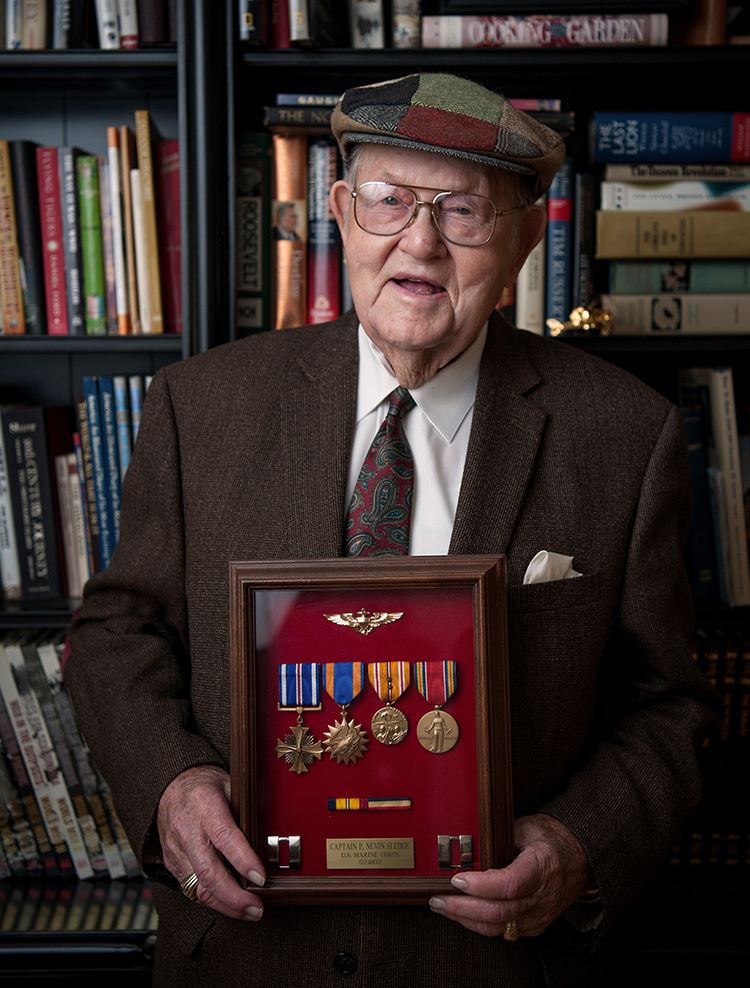
“It was just unbelievable,” Sledge, now ninety-nine, recalls of his reaction. “I said to the guys, ‘This is going to stop the war!’”
Three days later, on August 9, 1945, the second atomic bomb leveled Nagasaki, and the war ended shortly thereafter.
“The atomic bomb saved a lot of lives—millions of lives,” Sledge concludes
Buddy Thompson
As a kid, ninety-three-year-old Buddy Thompson of Greenwood was determined to be a soldier. He tried to go in early, but his parents intervened and insisted he first graduate from high school. Buddy turned seventeen in June 1944 and went straight into the Army Air Corps.
“I love my country,” Buddy answered when asked why he wanted to serve. “I wanted to be in there and do something to help my country.”
Born and raised in Florida, Buddy went to Keesler Air Force Base in Biloxi for basic training and then to gunnery school at Lowry Air Force Base in Denver. Buddy wanted to be in the heat of the battle, to go fight overseas. Instead, he was transferred to the Air Force base at Langley, Virginia. He worked with personnel records and solider pay. Even though those assignments were important and necessary components of the war effort, Buddy was very disappointed.

“I was frustrated because I didn’t feel like I was making a real contribution to the war,” Buddy admits about what he felt at the time. “It’s one of my biggest regrets, and I wished I could have done more to help. All those people in combat, they really suffered.”
The fact is Buddy had no choice. “I had to do what they told me to do,” he agrees. “I did it well and to the best of my ability.”
As for the surrender of Japan and the end of World War II in 1945, Buddy remembers that day clearly.
“I was overjoyed!” Buddy recalls. “Our loved ones were coming home! I was also grateful that I’d be coming back to my family.”
Joe Barnes
Before he was a citizen soldier, Joe Barnes, one hundred, of Rosedale, now one- hundred years old, was an elementary school teacher. In early 1941 he registered for the draft and in May entered basic training at Camp Shelby in Hattiesburg. He joined the Army’s 36th Infantry Division.
The men of the “Fighting 36th” were the first Americans to enter combat on the European continent. Joe started off as a gunner in the mortar squad and eventually worked his way up to earn officer ranking as second lieutenant.
It was dark when Joe and his platoon landed on the beach near Paestrum, Italy, in September 1943. Germans responded with a barrage of gunfire. Thankfully, Joe and his small band of troops survived and were able to join up with the rest of the 36th Infantry. That winter they battled their way north, slowly making progress along the Italian mountain range.

They reached Rome in June of that year and then marched north into France. It was there, in October 1944, that a sniper’s bullet hit Joe in the right leg and severed a sensory nerve. The injury resulted in multiple surgeries and a long recovery. Joe was still in the hospital in Battle Creek, Michigan, when victory in Europe was reached.
“We were all thrilled—it was over!” Joe recalls. “There was a lot of fighting to be done when I got shot, so I wasn’t there to celebrate with those who were.”
Joe remembers when Japan surrendered.
“There was a lot of relief when we found out we didn’t have to go to the Pacific,” he says. “We were all very happy, even through we were all back in the States where we were safe.”
Dutch Ehret
Greenwood’s Dutch Ehret, ninety-six, grew up on the banks of the Mississippi River, right across from New Orleans. He graduated from high school in 1941 and got his draft notice in January 1942. Dutch completed training at Camp Hulen in Texas and was assigned to the Bofors gun—the powerful 40 mm antiaircraft weapon that could hit targets as high as twenty-two thousand feet. Dutch and his fellow soldiers learned how to operate the gun along with how to identify every kind of aircraft in preparation for making split moment decisions.
On “D-Day plus 2,” Dutch landed on Omaha Beach in France with the 29th Infantry Division. The Bofors gun was pulled by a 2.5-ton truck, and its operation required a four-man team. Soldiers with 50 mm guns stood guard, and it was fire from those guns that caused Dutch to lose a good part of his hearing.
From Normandy to the Elbe River in Germany, the 29th Infantry cut an eleven-month swath into the Axis stronghold. Dutch remembers that last day in May 1945.

“We met the Russians at the Elbe River chasing the Germans. The Germans were surrendering, and the 29th was taking their rifles and their armaments. The Germans were even surrendering their planes. The Russians came in on horseback, and they wanted something to drink. We wanted cigarettes.”
A few months later, Dutch was part of the occupation forces in Germany when he received word that the Japanese had surrendered.
“I love America, and I wanted to be a part of it—we were fighting for the American flag, but now I was coming home,” Dutch says. “Oh, I was happy lad!”



